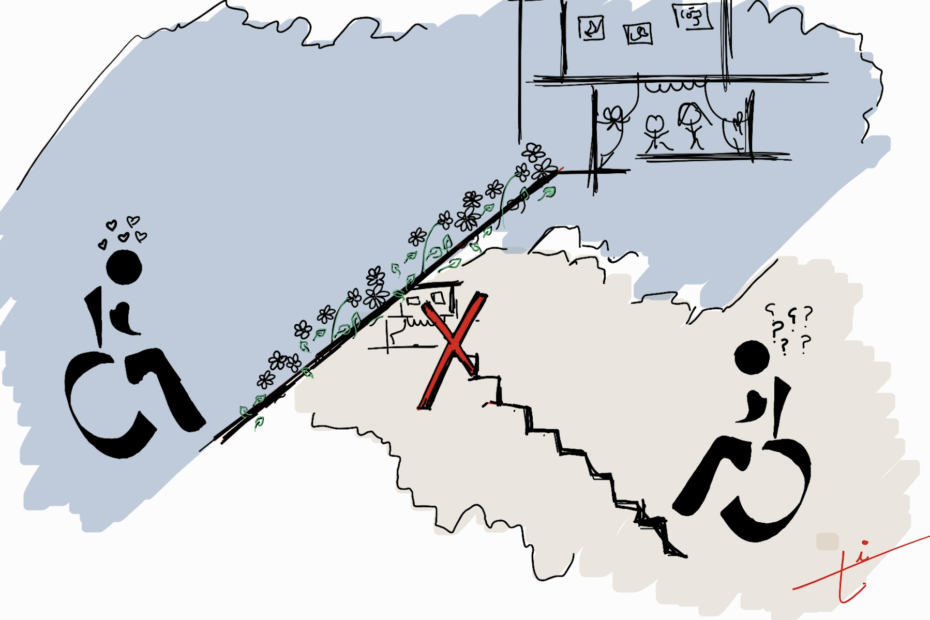Cultural spaces such as museums, movie theaters, galleries, libraries, performing arts centers, public arts sites, arts education facilities, and virtual events often fail to adequately accommodate disabled people. Prioritizing physical accessibility in cultural spaces is crucial to create more equitable enjoyment, participation, and representation within the arts. The city and event organizers must be more considerate of the needs of all people.
Public Transport
The Montreal metro sees 1.36 million passengers per day, and is a key mode of transport for getting to cultural events. Following an audit of the accessibility of the Montreal metro, it was found that only 16 of the 68 metro stations have an elevator in at least one entrance, 32 have at least one entrance without an escalator, and 18 have escalators that either only go up or down.
Recommendations for train accessibility include:
• Wider doors to allow easier wheelchair embarkment/disembarkment
• Increase height of doors and ceilings
• Contrasting colours for better visibility and object identification
• More and better-positioned hand grips
• Wheelchair spaces in each car
• Visual and automated information indicating stations, connections, and opening/closing doors, as well as tactile information screens
• A low floor with installed gap fillers
• Spacious toilets on trains/train platforms
• Promote current accessibility with accessibility symbols
Virtual Events
The pandemic has allowed increased access to events for people with mobility difficulties, as many events continue to be virtual. However, online events can still be inaccessible for those with vision, hearing, and learning disabilities.
Recommendations for virtual event accessibility include:
•Include contact information on website or event page to request an access accommodation, and ensuring that it is convenient to request accommodations
•Promote current accessibility with accessibility symbols
•Enable live captioning
•Provide a sign language interpreter
•Provide visual/audio description (for example, narration and captioning of the visual images in event)
•Insert alternative text on all images
•Provide accessible visual material: legible font style and size, image descriptions on presentation, blank space at the bottom of slides to ensure that live captions are not covered/hard to read
In-person Events and Event Spaces
Museums especially are often hard to navigate for wheelchair users.
Recommendations for in-person event accessibility include:
•Consider if there is an accessible metro station and if there are bus routes close to the space
•Use contrasting colors and legible, large font on marketing materials
•Offer accessible versions of all programming (larger print programmes and captioned videos)
•Allow people with disabilities to pre-book transportation after the event
•Closed captioning and sign language interpretation during the event
•Removable seats to allow greater wheelchair mobility
•Check that automatic doors, elevators, ramps, escalators and handrails
are available at the site
Further Resources accessibility information and local organizations:
Accessibility Guidelines for Organizers & Facilitators (Accessibilize Montreal and the Centre for Community Organizations)
Accessibility Toolkit: A Guide to Making Art Spaces Accessible (Professor Anne Zbitnew, Humber College and Tangled Art + Disability)
Accessibilize Your Event (Olivia Dreisinger)
VIBE: Challenging Ableism and Audism in the Arts (Critical Disability Studies Working Group, Concordia University)
The Radical Access Model of Disability (Community-University Research Exchange Montreal)
